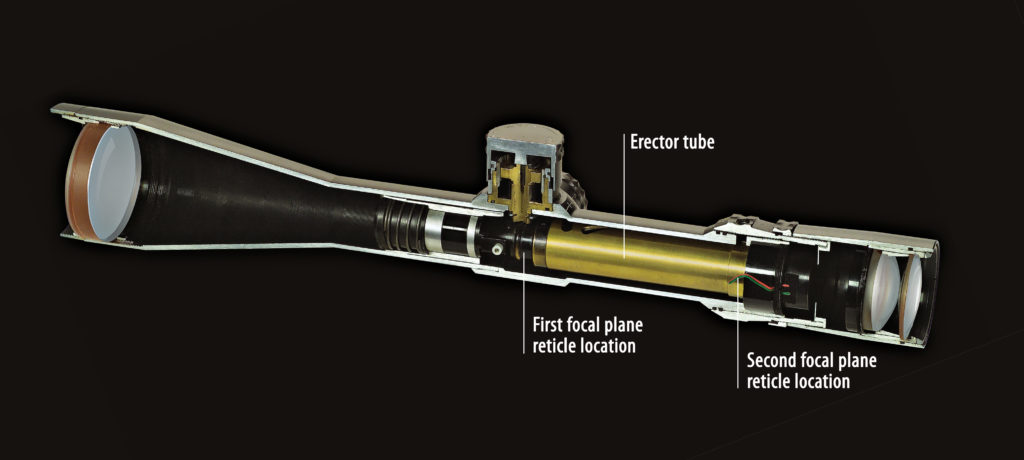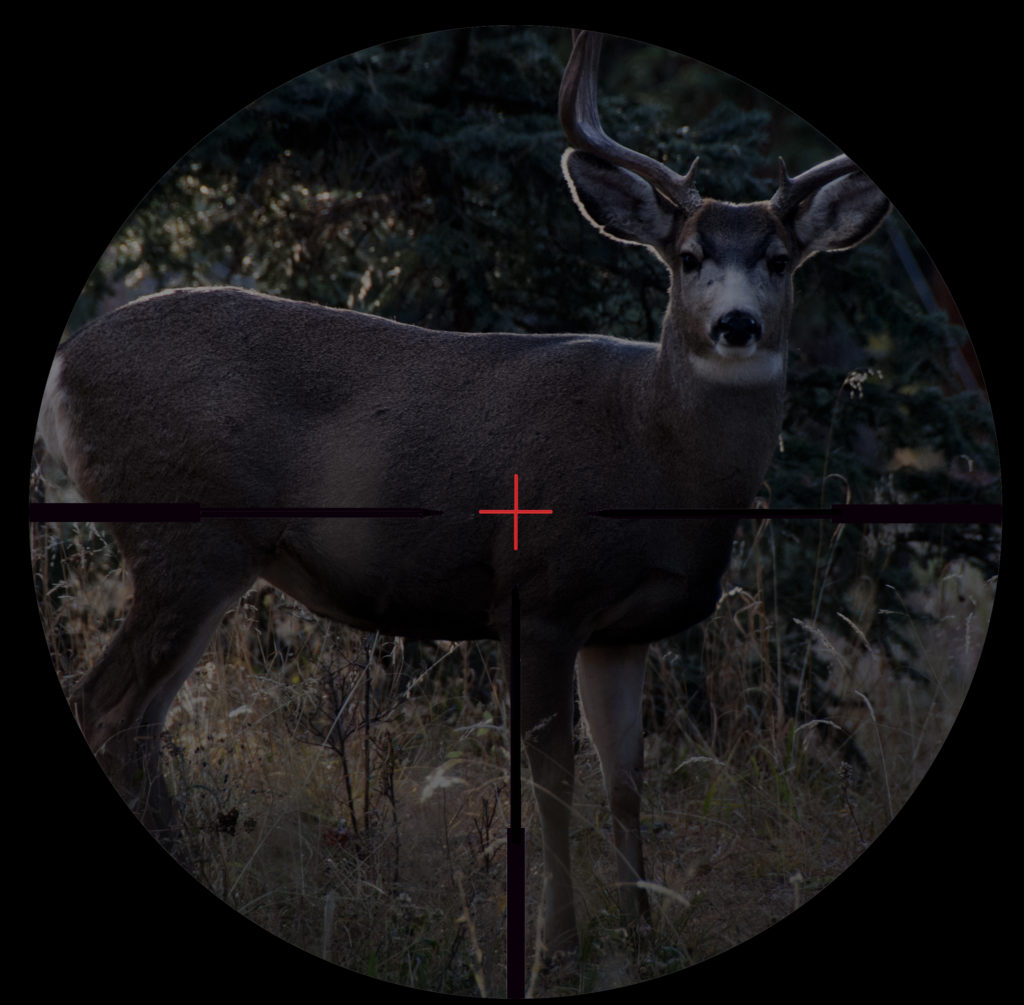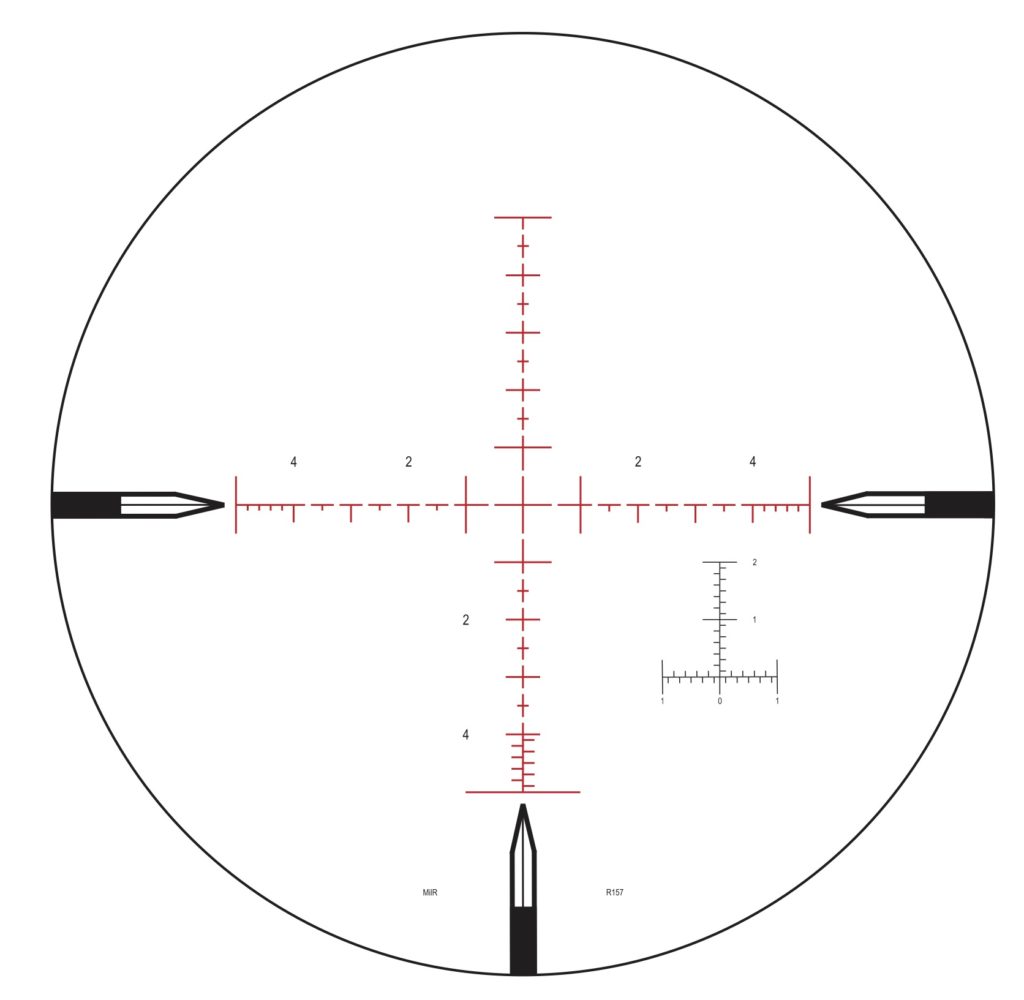Hunting was a lot simpler 30 or 40 years ago. Riflescopes came only in a few basic flavors, and about all we had to worry about was the scope’s magnification range and if it was of reasonably decent quality. Rarely was a choice of reticles even offered, and most hunters accepted the basic “crosshairs” that came as standard equipment because there simply weren’t any other options. If you have your sights on a new riflescope, you might want to think about your reticle first. Here’s what you need to consider.
As with other aspects of modern life, radical new technologies have arrived in the optics industry…one result being a vast, albeit sometimes confusing, array of new reticle designs. The good news is that in conjunction with remarkable advances in riflescope design and quality, and vastly improved bullet construction for flat-shooting calibers, today’s rifle/scope/reticle combinations are capable of pinpoint precision at extreme distances unheard of just a couple of decades ago.
The bad news? Choosing a reticle now requires a great deal of thought and soul-searching. Some are extremely sophisticated and user-friendly. Others, frankly, are little more than marketing gimmicks. A reticle must be appropriate to the type of game pursued by the hunter, his hunting environment, and perhaps most important, to his attitude. The right one can be your BFF. Make the wrong choice, and a reticle could prove to be your worst enemy.
There is a reason why the riflescopes available from the handful of manufacturers building the very best optics can cost well into four figures. These companies are crafting scopes using the finest raw materials and most advanced manufacturing processes possible, scopes capable of previously unobtainable resolution and repeatability. This is why skilled shooters are able to push the envelope of distance and accuracy ever further. Consider, for example, one of the recent world records, shot by Matthew D. Kline using a Nightforce scope. Mr. Kline put 10 shots into 2.815 inches at 1000 yards. There are days I would be happy with that at 100 yards.
The reticle is what translates all the inherent capability of riflescopes like these into something you can see — and ultimately apply to your target. This is why the proper reticle/scope combination for your application is so critical.
For the purpose of this article, we’re going to concentrate on what the hunter needs to consider, especially the mountain hunter, and leave the radically different concerns of tactical professionals, competition shooters and military snipers for another day. I am indebted to my friends at Nightforce Optics, who long ago realized that exceptional riflescopes and extremely precise purpose-built reticles are inseparable, for much of the information that follows.
To illustrate just how important reticles have become in the buying decision, I asked Sean Murphy, marketing project manager at Nightforce, what their customers say about reticles when they’re considering a new riflescope. “Sometimes I think we sell just as many riflescopes because of our reticles as due to the scopes themselves,” he laughed. “We created most of our own reticle designs,” he said, “and they have proven to be so effective that many of our customers request a specific reticle first, then choose a scope it is available in.”
What Is a Reticle?
The term “reticle” is derived from the Latin “reticulum,” which means “net,” referring to a net of fine lines. Originally, reticles were made of hair (thus the term “crosshairs”) or of actual spider webs. Finding that such materials were a bit tricky to work with, optics manufacturers eventually began using extremely thin metal wire installed by hand. This technique was commonplace until recent years, and some time back I had the privilege of seeing this process. I watched a highly skilled individual, possessed of extremely steady hands and nerves, working under a high-power magnifying glass with tweezers to secure these microscopic bits of wire into place. It was a demanding procedure and a talent that took years to master, and the costs involved and the inherent design limitations of physical wires have now made this increasingly rare.
Most reticles these days are etched into glass, often by lasers. This allows a virtually infinite variety of designs, and detail that would be impossible to achieve in any other fashion. It is still, however, a demanding process, and poorly made glass reticles are not highly durable.
A glass reticle can absorb light, as do all the lens elements in a riflescope, thus diminishing light transmission. The better manufacturers negate this, however, by multi-coating the reticle glass just as they do with the large lenses in a scope.
The Plain Truth About Focal Planes
In the construction of a riflescope, the reticle itself can be located in either the front (first focal plane) or rear (second focal plane) optical plane. Until recently, most riflescopes sold in North America were second focal plane design, while Europeans often preferred first focal plane configurations.
In a variable power second focal plane riflescope, the reticle, as you see it, does not change in size across the scope’s magnification range. In other words, it appears the same at four power as it would at, say, ten power. In a first focal plane design, the reticle appears to grow larger as magnification increases. This can be disconcerting if you have not used a first focal plane scope.
Why the two styles? And is one better than another? The answer is, it depends.
Most hunters will be perfectly happy with a second focal plane reticle. This is what most of us are used to, and it presents the same reticle picture regardless of the scope’s magnification setting. There are many more scopes available with second focal plane reticles, and many more reticle designs available for them.
A reticle with first focal plane placement appears to grow as you increase the scope’s magnification. Hunters not used to this complain, “The reticle gets bigger.” That is not entirely accurate. The reticle stays in the exact proportion to the target across a scope’s entire magnification range. So, while your target will appear larger at 10x than at 3x, the reticle will appear proportionately larger, too. This characteristic has specific advantages for tactical shooters, many law enforcement and military professionals, and others who prefer its distinct attributes. Because the target and the reticle are always in the same relationship, it can provide sophisticated rangefinding information and can be extremely useful in rapid-fire environments where the shooter expects to encounter multiple targets at varying ranges and magnification settings.
Because of how the internal mechanics of a variable power riflescope function, first focal plane placement also absolutely guarantees there will be no shift in point of impact across a scope’s entire magnification range, while a poorly built second-focal-plane riflescope can place a bullet differently at high magnification settings than at lower settings. This shift might be negligible at 100 yards or so, maybe only a fraction of an inch, but any such error is multiplied as range increases. The easiest way to avoid this is to simply buy a good riflescope. For hunting purposes, you will most likely be happiest with a second focal plane version. If you need the specialized behavior of a first focal plane reticle, chances are you already know that.
Illuminated or Non-Illuminated?
Most scope manufacturers offer the option of illuminated reticles. This simply means that some portion, or all, of the reticle can be illuminated, usually to varying degrees of brightness via a built-in rheostat. Better scopes provide very subtle levels of lighting, beginning at barely perceptible and continuing in small, user-selectable increments to quite bright. The purpose of this illumination is to allow you to see the center portion of the reticle at first or last light, when standard black crosshairs can disappear against the dark body of an animal.
Is it essential? Not necessarily. In my 40 years of hunting, there have been only four or five times I could not make out my crosshairs for a shot. But, if I was zeroed in on a real trophy, in those instances the illumination was priceless. If you are out at dawn and still out at dusk, or if you often encounter bad weather, it is definitely worth the small added cost of reticle illumination.
If you go that direction, make certain that your scope offers multiple — and subtle — degrees of illumination. While most reticle illumination is red, since red does not degrade night vision as much as other colors do, if you cannot control the brightness adequately, a bright flash of red light is going to leave you blind for several minutes.
The better manufacturers often build their illumination switches so you can pre-select a brightness setting appropriate for your conditions then switch it off to conserve battery power. A small turn of the illumination control will then restore your illumination to your chosen setting. If you have to cycle through different brightness levels, not only is this inconvenient in the field, but it can ruin your night vision.
While most hunters value illuminated reticles for low-light use, the brighter settings can also be quite useful in extreme glare, snow, desert and sun-baked rocky environments.
A few states in the U.S. consider illuminated reticles to be “lights,” and prohibit their use for hunting. Check your regulations if you’re going to be hunting in one of those uninformed jurisdictions.
When black crosshairs are hard to discern against the dark body of an animal, an illuminated reticle will provide a precise aiming point.
MOA, Mil-Radians, and More
Another recent development in riflescopes (and reticles) has been the choice of both MOA (Minute of Angle) and Mil-Radian elevation and windage adjustments. MOA adjustments have been around since the Jurassic age of riflescopes —except we used to call them “quarter-inch clicks.” The elevation and windage adjustments of most riflescopes (at least those built for the American market) were marked in ¼ inch increments, the idea being that one click of the turret would move your bullet’s point of impact ¼ inch at 100 yards.
This was more than adequate when “long range” was considered perhaps 300 yards, and anything further was (regardless of the Annie Oakley-level prowess claimed by many hunters) in reality a Hail Mary effort. As rifles and riflescopes have become ever more capable of pinpoint precision at extreme distances, a 100-yard measuring stick no longer made sense. Thus, “minute of angle”—terminology that used to be heard only among military and competition shooters — has entered the lexicon of the average hunter. It is a highly precise reference point and an infinitely more accurate method of determining shot placement at every distance than “couple inches high at 100.”
I asked Klaus Johnson, one of Nightforce’s top engineers and a man not intimidated by numbers, to explain MOA. “It is an angular system of measurement,” he said. “Many shooters think that one MOA equals one inch at 100 yards, but that is not entirely accurate. A true MOA is one-sixtieth of a degree, which is 1.047 inches at 100 yards.
“Because it is an angular measurement, it is not an equal, linear amount at all distances. So, one MOA is 1.047 inches at 100 yards, 2.094 inches at 200 yards, 3.131 inches at 300 yards, and so on.”
For the hunter, it is generally close enough (and much easier) to consider one MOA being one inch at 100 yards. This brings us full circle to ¼ inch clicks, the most common elevation and windage adjustments on hunting riflescopes. It is more accurate, though, to refer to them as ¼ MOA clicks. Why?
Because if and when you venture into a more sophisticated “ballistic” reticle, you will often be given the choice between an MOA or a Mil-Radian design, which also corresponds to the type of adjustments offered on your riflescope.
What about Mil-Radians? Mils are also an angular system of measurement, but quite different from MOAs. One mil is equal to 1/6283 of a circle, or 3.43775 MOA. One mil equates to 3.599 inches at 100 yards, or 1 centimeter at 100 meters.
Mil-Radian advocates claim that this discipline is more flexible and inherently more accurate than relying upon MOA. It is particularly appropriate when operating in metric environments, since it is based on increments of 1000. Becoming proficient in Mil-Radians is considerably more complicated, though, than dealing with MOAs. Even I can grasp the concept of one inch at 100 yards. Unless you are trained in military shooting or have prior experience in the Mil-Radian arena, my advice is to stick with MOAs. This will serve you well when we explore the remarkable capabilities of MOA-based reticles a little later.
The MOA-based Nightforce MOA™R reticle.
The Nightforce MIL-R™, an example of a Mil-Radian reticle designed for use with Mil-Radian elevation and windage adjustments.
Laying the Groundwork
In Part One of our reticle journey, we’ve covered some pretty basic — and maybe a bit boring — details about how reticles and riflescopes function together. Part two promises to be a bit more exciting, as we explore reticle styles, hunting applications of MOA-based reticles, and how to choose a reticle that just might open your eyes — literally — to new worlds of precision and confidence in your shooting. We’ll even look at how the most basic reticle can hold hidden secrets that will provide accurate holdovers and eliminate a lot of guessing. See you in a month for Part 2!
About the Author:
Tom Bulloch has worked in the optics industry for over 21 years. He has hunted on six continents, doing, as he puts it, “more hunting for less money than any man alive.”
His credentials as a mountain hunter include two ibex, bighorn and Dall sheep, a mountain goat, tahr, chamois, mouflon, and many timberline elk and mule deer. He lives at nearly 9000 feet in the Colorado Rockies, where, he says, “even looking for my car keys is a mountain hunt.”






